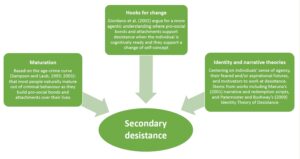Despite heroic efforts by staff…
Today’s (31 August 2017) probation inspectors’ report on Gloucestershire, unfortunately, fits the pattern we have come to expect:
“Overall the National Probation Service (NPS) was managing high risk offenders well, but the service provided by the private Community Rehabilitation Company (CRC) is simply not being delivered well enough in a sufficient number of cases.”
Chief Inspector Dame Glenys Stacey made a typically blunt appraisal:
Despite heroic efforts by staff, the service was nowhere near the standard expected.
This was the second inspection of adult probation work undertaken by a CRC owned by Working Links (the first was Gwent, which was equally critical) and the first of the NPS South West & Central Division.
Overall, inspectors assessed the work of the CRC in Gloucestershire as poor:
Working Links has not implemented its plans (as set out in their original contract bid) for continuity of support for people throughout their period of supervision. Instead we found cases being transferred between case managers too often, and staff carrying too many cases. Allocation decisions were based on a model which was not fully understood by staff, partly because it was complex, changing and not fully implemented.
The inspection looked at the quality of probation work carried out by the Community Rehabilitation Company (CRC) and the National Probation Service (NPS) and assessed the effectiveness of work undertaken locally with people who have committed crimes.
More detailed findings are set out below:
Findings — CRC
The main inspectors’ findings of the work of the CRC were:
- The CRC’s public protection work was poor. Although the quality of assessments of risk of harm was sufficient in three-quarters of cases, the work done with offenders to review and manage risk of harm was weak.
- The quality of work to tackle the most common problem areas influencing criminal behaviour was poor. While assessments and plans were generally sound, these were not followed through to effective delivery of interventions. As a result, in too many cases, the likelihood of reoffending had not been sufficiently reduced.
- The CRC was not sufficiently effective in helping offenders to abide by their sentence. The CRC took specific needs into account in around two-thirds of cases. Inspectors judged the number of appointments offered to be sufficient in a similar proportion of cases. Unpaid work was not managed or delivered well enough. Too many offenders were ‘stood down’ due to poor arrangements for transporting them to unpaid work sites and lack of placements.
The graphic below shows reducing reoffending findings for work undertaken by both the NPS and CRC:

Findings — NPS
Although inspectors were much more positive about the work of the NPS, there were still serious concerns. The main findings were:
- In terms of protecting the public, overall, NPS performance was good compared with other areas inspected under the current HMIP programme. Assessments were thorough and led to effective planning. However, plans were not always adjusted to reflect changes in an offender’s circumstances. Managers were aware of these shortcomings and had put in place a plan to rectify them.
- The court team was performing well. Assessments of offending-related needs were usually accurate, and good-quality plans were put in place. However, in the majority of the cases inspectors reviewed, NPS’ efforts to rehabilitate offenders often came to little or nothing, either because the offender disengaged or because, in those cases where specific interventions were planned to help someone turn away from crime, they were not actually delivered.
- The quality of NPS work was good. Offenders’ diverse needs were taken into account, and so they engaged well with supervision and abided by their sentence. Where non-compliance occurred, it was challenged appropriately.
Findings — Co-ordination between NPS and CRC
Overall levels of co-operation and co-ordination between both probation agencies appeared to be good:
- Most CRC and NPS staff in Gloucestershire remained co-located at the time of the inspection. Inspectors were impressed by the quality of relationships between staff at all levels.
- The CRC was generally satisfied with the information it received from the NPS court team. The NPS was broadly satisfied with the CRC’s delivery of accredited programmes and education, training and employment services. However, they had justifiable concerns about the delivery of unpaid work.
- The CRC and NPS were working together effectively where necessary to enforce the order of the court.
Conclusions
Disappointingly, it appears that the previous HMI Probation report which found both NPS and CRC performing well in South Yorkshire was a blip and that the general pattern of a stable and slowly improving NPS alongside an under-staffed, sub-standard CRC remains the norm.
Chief Inspector Dame Glenys Stacey summarised the performance of the CRC in two damning paragraphs:
The picture was much more troubling at the Community Rehabilitation Company, where there have been drastic staff cuts to try and balance the books. Those remaining are under mounting pressure and carrying unacceptable workloads that prevent them doing a good job.
This CRC’s work is so far below par that its owner and government need to work together urgently to improve matters, so that those under supervision and the general public receive the service they rightly expect, and the staff that remain can do the job they so wish to do.
Click here to see my infographic summarising findings from first twelve inspections of new public/private probation system.









One Response
TR remains an ongoing failure. Time for a rethink not just throwing money after bad,